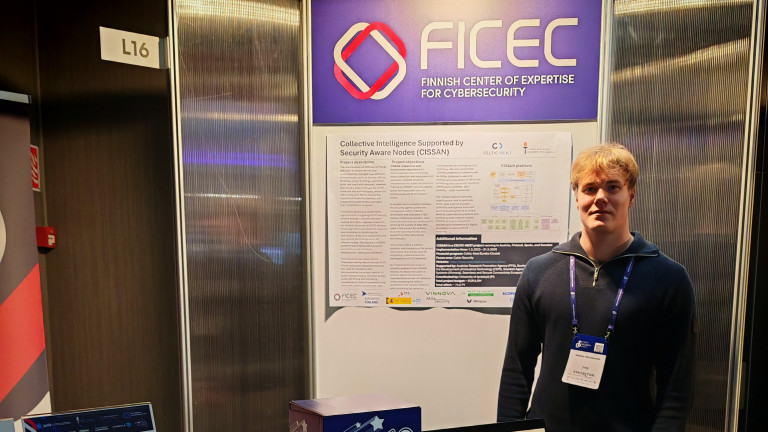CISSAN
CISSAN will build methods and technology for integrating collective security intelligence to IoT networks. CISSAN-powered networks will be able to collaboratively identify tampered and adversarial devices, detect malicious activities, and select effective countermeasures. Higher IoT network resilience will be accompanied by resource efficiency through intelligent distribution of security functionalities across network nodes.

Table of contents
Project description
The proliferation of Internet of Things (IoT) with its smart devices has fundamentally changed how different environments, such as homes, offices, factories, smart buildings, and smart grids, are used and operated. However, as stated in the Technical Paper on Internet of Things (IoT), security is a major concern for IoT networks and environments, where the risks of physical device tampering, injection of malicious devices, and unpatched vulnerabilities are higher than in traditional networks. This is nicely captured in the Hyppönen’s law : “If it’s smart, it’s vulnerable.” Following “when everything is connected, everything must be protected”, CISSAN proposes and implements algorithms for mitigating IoT security threats (good reviews of which can be found in Technical Paper on Internet of Things (IoT) and IoT Network Security: Threats, Risks, and a Data-Driven Defense Framework) through collective decision-making and with a reduced impact on the limited resources of IoT devices. These algorithms are based on research and innovation in optimizing the distribution of security capabilities and aggregating the intelligence in IoT network nodes. Three industrial use cases, which nowadays heavily rely on the use of IoT, inform the project developments and are used for validating and demonstrating the project results: (i) public transportation; (ii) smart energy grids; (iii) mining and tunnelling operations.
Publications
Cyber Security Nordic 11/2025
The CISSAN project collaborated with the Finnish Centre of Expertise for Cyber Security (FICEC) with the JYU team presenting the project at the Cyber Security Nordic event's venue on the 4th of November, 2025. The event collected together numerous entities in the cyber security field, providing an excellent opportunity for project work dissemination and networking.

Researcher's Night 2025
The CISSAN project participated in the Researcher's Night on the 26th of September, 2025. The JYU team of the project presented a demonstration on a Collective Intelligence IoT network to the general public. Posters on the project were made available to the visitors with an opportunity for asking additional questions from the project team members. In addition, posters provided by partners were also presented at the event.
CISSAN Workshop 09/2025
The CISSAN project held a workshop in Stockholm on the 23rd and 24th of September, 2025. The project partners presented their progress on enabling collective intelligence in the project's lab environment as well as their plans moving forward. Plans for the joint use case demonstration were made in addition to the CISSAN exploitation plans and the standardization efforts.
CELTIC-NEXT 01/2025 Newsletter
The CELTIC-NEXT Eureka Cluster 01/2025 newsletter included a project highlight of the CISSAN project detailing the project's motivation, use cases and lab setup. In addition, the project highlight contained information on synthetic network traffic data generation and details on the developed proof of concept for the collective intelligence.
CISSAN project Mid-term Review
The CISSAN project Mid-term Review was held in Vienna on the 16th of January, 2025. The project partners presented their results on different forms of anomaly detection, training and use of Large Language Models and Machine Learning models as well as first experiments with collective intelligence. The feedback from the CELTIC-NEXT reviewers was positive.


























